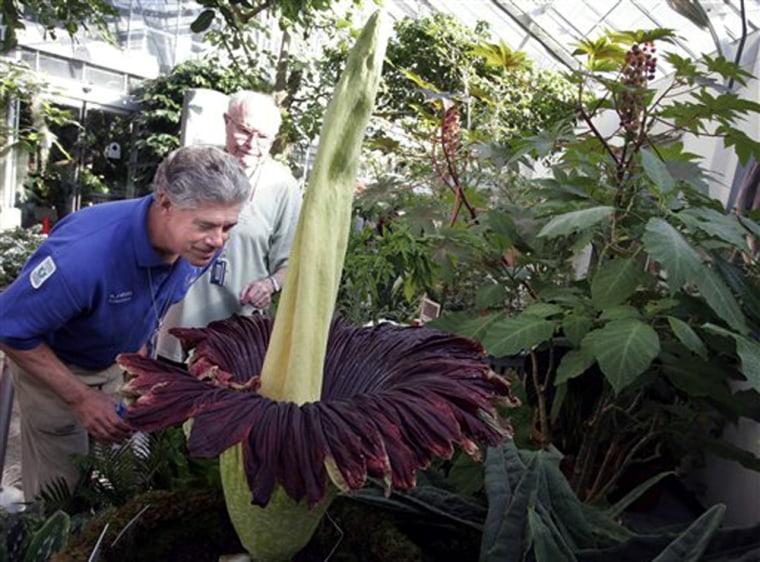Its scent has drawn comparisons to garbage and spoiled meat, but that isn’t stopping crowds from flocking to see — and smell — an unusual plant in bloom at the U.S. Botanic Garden.
The titan arum plant, nicknamed “corpse plant” for its rank smell, is attracting thousands of visitors during the day or two it remains in bloom.
“It’s quite spectacular: the color and the form and the strong odor,” said John Kress, chairman of the Smithsonian Museum of Natural History’s botany department, which owns the plant. “I think that’s what most people come to see. Or smell.”
The long, conical bloom of the titan arum is believed to be the largest flower that doesn’t grow on a tree. It has been known to grow 12 feet (3.7 meters) high in its native habitat on the island of Sumatra.
The specimen at the botanic garden, which began blooming early Sunday, is about 5 feet (1.5 meters) high.
Now that it’s in bloom, the plant has also started emitting a smell that’s drawn comparisons to garbage, spoiled meat and rotting fish. But the plant’s stench is actually the key to its survival: carrion beetles and other pollinators in its native Sumatra are attracted to the smell, Kress said.
“These beetles usually lay their eggs in rotting animals, so this plant pretends to be a dead animal,” he said.
The smell also seems to be attracting visitors to the botanic garden. About 2,000 people had come to the garden to see the plant by Sunday afternoon, and at least 10,000 were expected by day’s end.
Visitors are also interested in the plant because they are few chances to see one, Kress said. There are only about a dozen of the plants in the United States, he said.
A typical titan arum plant only blooms about once every five years. The one at the U.S. Botanic Garden is blooming for the first time at age 14.
Garden visitor Charles Miehm said he came to see the plant because it seemed like a rare opportunity.
“It’s not as rancid as roadkill, but it’s got a pretty potent smell,” he said.
